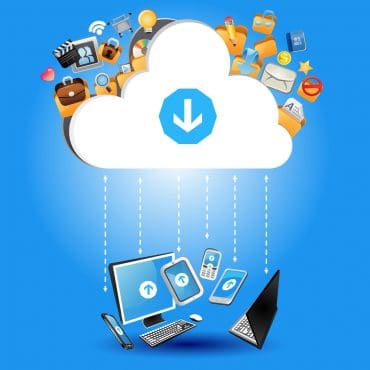
How to lay the groundwork for secure, reliable, and cost-effective solutions to support today and tomorrow’s wireless needs.
Many commercial and industrial organizations are exploring IoT solutions to drive productivity, automation, and cost-savings within their business. Ericsson forecasts the number of cellular IoT connections to reach 3.5 billion by 2023. Unfortunately, traditional wireless networks are not capable of handling the requirements of high-performance, low-latency IoT deployments. IoT-enabled devices require a wireless connection with superior network speeds, capacity, and reliability to enable real-time data collection for rapid data analysis and response.
See also: Will 5G Have a Role in Providing CI Apps with IoT Data?
Organizations often turn to Wi-Fi solutions for connectivity services as they are easy to install and inexpensive to deploy. However, Wi-Fi connections are prone to interference and lack the dependability for mission-critical IoT use cases, such as autonomous driving. Because of the absence of cost-effective, easy-to-manage solutions today, organizations are facing a connectivity issue that poses a critical barrier to IoT adoption.
Issues with Existing Offerings
Traditionally, wireless spectrum has been allocated in one of two ways: for exclusive use via the auction of costly license rights or unlicensed use available to all on a best-effort, uncoordinated basis. The licensed approach underpins today’s mobile services, including LTE, while the unlicensed approach has given us technologies such as Wi-Fi.
The unmanaged spectrum bands utilized for Wi-Fi have become crowded and are prone to interference. Moreover, Wi-Fi alternatives, like mesh networks using Zigbee or Z-Wave, come with their own set of challenges, including high implementation costs, increased complexity, and significant power consumption. While licensed LTE solutions are highly reliable and secure, the lack of available spectrum made the approach unviable for scaling IoT deployments. Until today.
How OnGo Will Empower IoT Deployments
As IoT innovation and device deployment efforts increase, it is vital for organizations to lay the groundwork for a secure, reliable, and cost-effective solution to support today and tomorrow’s connectivity needs.
In 2015, the Federal Communications Commission (FCC) established the Citizen Broadband Radio Service (CBRS) framework to open the 3.5 GHz spectrum band for new commercial services on a shared basis with existing incumbent users. The allocation is governed under a tiered spectrum-sharing arrangement. The incumbent users (i.e., federal agencies), priority users (PALs), and general access users (GAA) will be able to operate in the band in descending order of priority, according to standardized criteria. The spectrum is carefully managed to ensure there are no interruptions to users in either the incumbent or priority tiers. The CBRS Alliance created the brand OnGo™ to represent the technology and solutions that utilize the 3.5 GHz spectrum band.
The CBRS framework is an innovative model that will become as important as the traditional approaches – and potentially form a shared spectrum model that additional bands in the U.S. and abroad can follow. OnGo enables carriers, managed service providers, fixed operators, enterprises, and industrial players to access 150 MHz of underutilized spectrum while protecting existing incumbent users by taking advantage of advanced allocation and coordination techniques.
Deploying OnGo solutions in the 3.5 GHz spectrum band is attractive for private enterprise networks because governing standards allow for advanced LTE technology to be used without the need to strike agreements with licensed mobile operators. Instead, enterprise users can take advantage of the 80 MHz of spectrum always available in GAA or acquire relatively low-cost PALs for additional spectrum. LTE solutions utilizing the CBRS band provide interference-free services that target connectivity gaps, and for IoT deployments, OnGo offers a new alternative that delivers reliable, secure, and predictable connectivity at a lower cost than traditional approaches.
Use Case Example – Revolutionizing Port Automation with CBRS and LTE
For example, the shipping industry is looking to leverage industrial IoT platforms to achieve better operational efficiencies. When human operators are at peak performance, an efficiently-managed standard port can process 24 containers per crane per hour; however, automated cranes can load 26 containers per hour currently, with improvements possible in the future.
A shipping container terminal includes many different end-points that must be connected using the same network. Automated port operations, driven by IoT-connected devices, use large automatic cranes and ground vehicles and need connectivity for safety (think video cameras and audio sensors) as well as broadband access for employees. Wi-Fi networks don’t meet the stringent reliability requirements for automation of heavy equipment and handling safety control.
LTE is suitable for these types of use cases as it is a reliable, dynamic, and secure technology – and OnGo-enabled solutions make it possible to create an affordable LTE network with far less complexity. This enables ports to deploy a single, integrated wireless system to support automation, security, and remote monitoring functions to streamline operations from ship to shore to distribution, keeping pace with increasing container traffic. Moreover, enabling these remote monitoring and automation applications improves the safety of employees, as it eliminates risky manual procedures.
In fact, IoT-enabled devices open the door for a variety of industries to re-evaluate existing – and discover new – data-driven use cases, including predictive maintenance in manufacturing and supply chain, or public safety improvements for smart cities. Worldwide technology spending on the IoT will reach $1.2T in 2022, according to IDC. To deliver secure, high-quality IoT connections, organizations now have a highly reliable, cost-effective alternative in the form of private LTE networks operating in the CBRS band.






























